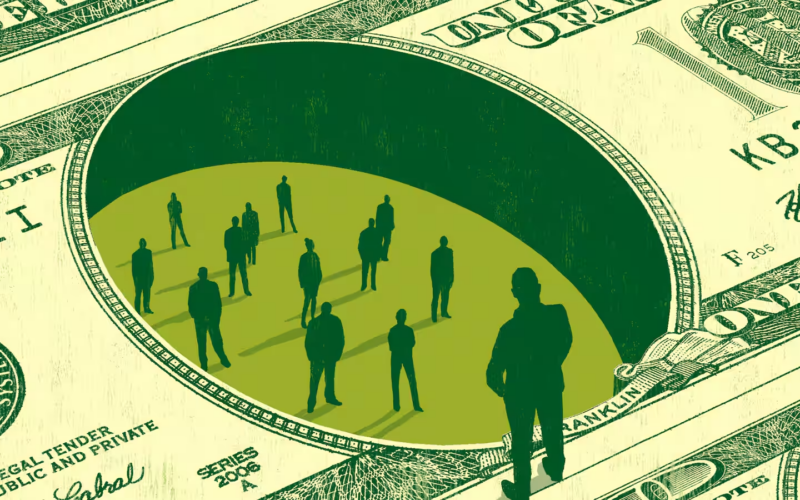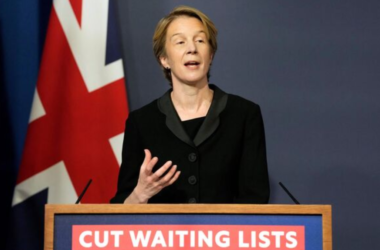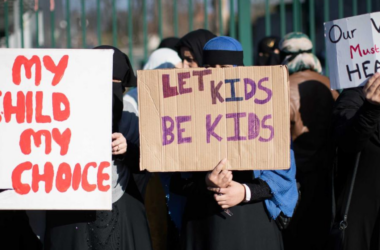The economic divide in the United States is becoming increasingly evident as workers grapple with high living costs while corporate profits and stock prices soar. Despite robust gains reported in national wealth, the benefits are disproportionately skewed towards the wealthiest, leaving many Americans struggling to make ends meet.
Economic Realities for Workers
The rising cost of living continues to strain the working class, who face growing challenges in securing well-paid, full-time jobs to support their families. Inflation, while slightly lower than its peak, remains significantly elevated compared to four years ago. Essential expenses such as food, housing, and insurance have outpaced wage growth, creating a challenging environment for many households.
A recent poll by No Kid Hungry New York highlights that 85% of residents find the cost of food is outstripping their income. This is particularly burdensome for parents and rural households, who often have to sacrifice purchasing fresh produce and meats due to their higher costs.
Job Market Dynamics
The U.S. job market is presenting a mixed picture. Official figures indicate an unemployment rate of 4% in May 2024, but the rate is nearly double for young adults aged 20-24. Job openings have fallen to a three-year low, and the rate of new hires is at its lowest in seven years. Although 272,000 jobs were added in May, most were in the leisure and hospitality sectors, which typically offer lower wages, part-time hours, and limited benefits. In contrast, the goods-producing manufacturing sector added only 25,000 jobs.
The Bureau of Labor Statistics reports a drop of 408,000 jobs in May compared to the previous month. Over the past year, there has been a modest increase of just 31,000 jobs. Additionally, 750,000 workers have left the workforce after prolonged unemployment.
The economic pressures have forced many workers to take on multiple jobs to meet their expenses. As of May, 8.4 million workers had more than one job, impacting their ability to spend time with their families or pursue personal interests.
Housing and Inflation Challenges
Housing costs continue to rise, consuming a significant portion of workers’ incomes. Rents now take up at least one-third of an average worker’s monthly paycheck, with higher proportions in cities like New York, where recent rent increases affect nearly 1 million apartments. The cost of car insurance has surged by over 22% since last March, with more increases expected.
The dream of homeownership remains elusive for many. Only 5.8% of renters have the income required to afford a median-priced home, as the average 30-year mortgage rate hovers around 7%, up from 3% three years ago. Home prices have reached record highs, making it difficult for prospective buyers.
Older Americans are increasingly vulnerable, with those over 50 becoming the fastest-growing segment facing homelessness. Many have worked in low-paying jobs and lack substantial savings, making them susceptible to economic disruptions that can lead to homelessness.
Disparities in Wealth Distribution
The Federal Reserve reports that U.S. household net worth reached a record $161 trillion in the first quarter of 2024, driven largely by rising stock prices. However, this wealth is highly concentrated, with the richest 1% owning 50% of all equity wealth and the top 10% holding 90%. This disparity underscores the sharp economic divide in the country.
While corporate profits and stock market gains benefit a small segment of the population, the majority of workers are not reaping similar rewards. Many find it difficult to cope with daily expenses despite the broader economic indicators suggesting prosperity.
Looking Ahead
The economic challenges facing the working class reflect broader systemic issues in the U.S. economy. The ongoing struggle to secure well-paid jobs, combined with rising living costs, highlights the need for measures to address economic inequality and support those most affected by inflation and high costs.
As workers navigate these difficulties, the importance of collective action, such as unionization, becomes more pronounced in advocating for better wages and working conditions. Addressing these economic disparities will require continued focus and policy interventions to ensure that the benefits of economic growth are more equitably distributed.








